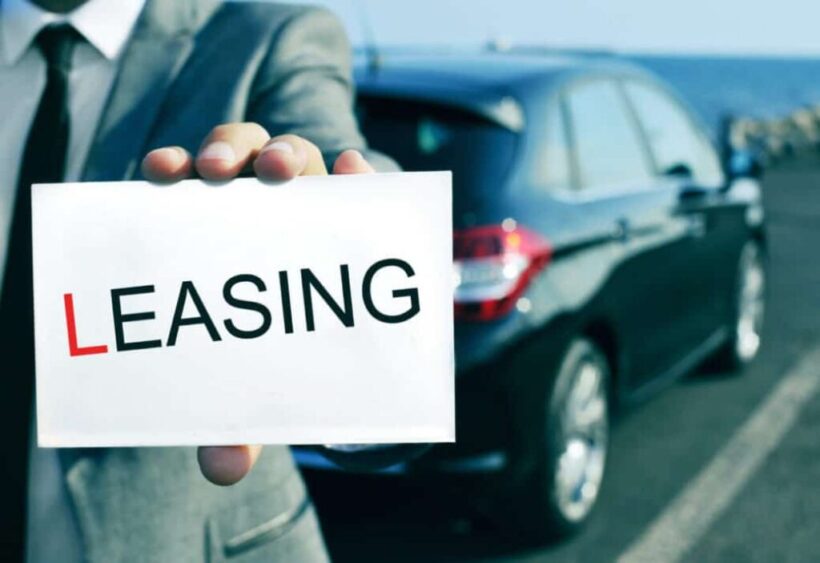With the increase in the cost of purchasing a new car, people are increasingly looking towards leasing instead. While a car lease may seem like a simple rental agreement, the type of lease (whether open-ended or closed-ended) is an important distinction that impacts your costs and responsibilities over the lease term.
In this article, we will explore prominent features of open-ended and closed-ended leases to help you determine the better option based on your unique driving needs and risk tolerance.
What Is a Car Lease?

A car lease is an agreement between a consumer and a dealership where the consumer makes monthly payments to rent a vehicle for a set period, usually up to 36 months. With a lease, the consumer does not own the car outright but pays to use it for the lease term.
At the end of the lease, you can either return the vehicle or, if the lease allows, purchase it by paying its residual value. The residual value is the projected value of the leased asset (such as a vehicle) at the end of the lease term. It is an agreed-upon estimate between the lessee and the leasing company of how much the car will be worth when the lease expires.
A lease provides the flexibility to drive a newer car for less than a loan would cost while avoiding long-term ownership commitments. There are two central car leases to be aware of: closed-ended and open-ended.
1. Closed-End Lease
We will discuss the key features and considerations associated with closed-end leases below.
Predictable Payments With No Depreciation Risk
In a closed-end lease, the contract specifies an agreed-upon residual value for the car at the end of the lease period. However, the lessee (the person who pays to lease an asset) does not bear any responsibility if the actual depreciation of the vehicle exceeds this residual value. Instead, the leasing company assumes the risk. If the car is worth less than estimated at lease-end, the leasing company is responsible for making the difference, not the lessee.
A significant advantage of closed-end leases is that the monthly payments remain fixed for the lease term, as mileage limits and lease duration are agreed upon upfront. You will know the precise monthly cost, making budgeting easier than open-ended leases where payments vary.
No Purchase Obligation and Early Termination Fees
Closed-end leases do not require lessees to purchase the vehicle when the lease ends. You can return the car and walk away without any future liability. If you want to return the vehicle before the lease term ends, there is usually a fee charged. You can click here for more information on your lease-end options and related services.
Penalties
In a closed-end lease, the terms and conditions of the lease agreement are fixed and set once both parties sign the lease. This includes parameters like annual mileage allotment, which acts as a limit on the number of miles the lessee can drive the vehicle each year of the lease without incurring any penalties. Leasing companies can charge penalties if you exceed the allotment significantly.
Closed-end leases also contain clauses about excess wear and tear on the vehicle. If, upon return, your dealer deems that the wear and tear exceeds normal usage, they can charge additional fees.
Open-End Lease

Let’s discuss the key features and considerations associated with open-end leases below.
Flexible Terms
Open-end leases offer more flexibility compared to closed-end leases. Miles limits are typically not predefined, so usage can vary as needed without worrying about extra fees for exceeding thresholds. The duration of the lease is also often adjustable, making it more suitable for commercial fleets with unpredictable driving patterns.
Potential for Savings and No Purchase Obligation
If the vehicle depreciates less than expected, lessees may save money, as they’ll pay only the real market value rather than an inflated projected value from the start of the lease. However, you must weigh this risk against potential costs. If depreciation turns out to be greater than projected, there is a risk the lessee may have to pay more than planned. Open-end leases also do not require lessees to purchase the vehicle when the lease ends.
Assumption of Depreciation Risk
In an open-ended lease, the vehicle’s residual value is estimated upfront when signed. Your dealer will use the residual value to calculate what you will owe to purchase the car at the end of the lease term.
However, the vehicle’s actual value at the end of the lease may be different than the original estimated residual value. It could be higher or lower depending on real-world depreciation and market conditions.
With an open-end lease, you bear the risk of any gap between the estimated residual value set in the lease versus the actual trade-in or resale value of the vehicle when the lease ends. If the actual value is lower than the residual value, you must make a “balloon payment” to cover this shortfall. The balloon payment is a lump sum amount owed all at once at the lease-end
More Complex Terms
Open-end leases tend to be more complex than more straightforward closed-end leases. The variable payment structure and risk assumption require more effort to understand obligations. The lessee assumes more risk compared to a closed-end lease, with monthly payments that can fluctuate depending on factors like residual value changes or interest rate movements over the term of the lease. This variable structure means the lessee takes on more uncertainty regarding their payment obligations.
Penalties
Open-end leases also charge a fee in case of excess wear and tear on the vehicle. For example, minor scratches are fine unless primer or bare metal is visible, showing damage through the paint. Similarly, tire tread cannot be worn below the minimum safe limit defined in the lease agreement.
Which One Is Suitable for You?

Most leases offered to individual consumers are closed-end leases, and it is more common for personal car use. A closed-end lease is generally recommended for consumer use due to predefined expenses and limits on liability.
Open-end leases offer more flexibility but also mean the lessee takes on financial risk if the car depreciates more than expected. These leases are typical for business fleets with variable mileage needs or want options. Consider an open-ended lease only if flexible mileage is essential or you are comfortable taking on the depreciation risk.
Endnote
With a firm understanding of these lease types, you can select the option that best suits your budget and driving habits. Don’t hesitate to consult knowledgeable professionals if you have any other questions during the leasing process. Making an informed choice upfront will help ensure your vehicle rental experience meets your financial goals and expectations.

